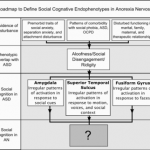Mental health articles
OF mental health care and mentally ill
Medical Complications of Anorexia Nervosa
ANOREXIA NERVOSA The first medical reports of anorexia nervosa were by Dr Richard Morton (an Englishphysician) in 1689. He referred to the disorder as ‘nervous consumption’, but it wasnot until 1868 that Sir William Gull (an English physician) and Dr Charles Lasègue(a French physician) provided the term ‘anorexia nervosa’. Their descriptions of thedisorder are still used today. However, it was not until after 1960, when Dr HildaBruch (a German-born American psychiatrist) provided further details regardingthe psychological aspects of anorexia nervosa combined with the physical featuresrecorded by Gull and Lasègue, that anorexia nervosa was recognised as a distinctdisorder. A literal translation of the term means a ‘lossof appetite due to nervous reasons’, which is misleading as the person does not losetheir appetite but strictly restricts their food intake. Anorexia nervosa is generally diagnosed in females, with men accounting for 10%of cases. However, community-based studies of both anorexia nervosa and bulimianervosa suggest that there is one male case to every six female cases. As it is deemed a condition that affects teenage girls, health care professionalsmay not recognise anorexia nervosa in men. Menare often afraid to speak about their weight problems and may present to a health careprofessional with complications from the disorder, such as joint pain due to excessiveexercising. In addition, most health care services are geared towards females. Anorexia nervosa usually occurs during adolescence and affects0.7% of teenage girls. It has frequently been stated that the person with anorexia nervosa tends tocome from the professional (social class 1, e.g. doctors, dentists and lawyers) andintermediate (social class 2, e.g. nurses and teachers) classes.Although this has been disputed, McClelland and Crisp found that whenthey examined the class status of women presenting with anorexia nervosa at theirspecialist clinic over the past 33 years: • 67.5% came from social classes 1 and 2 • 21% came from social class 3 (skilled, e.g. clerical workers) • 10.8% came from social classes 4 (semi-skilled, e.g. postal workers, telephoneoperators) and 5 (unskilled, e.g. cleaners, labourers).
Post Footer automatically generated by wp-posturl plugin for wordpress.
More from my site
Tags: anorexia nervosa, medical







Leave a Reply